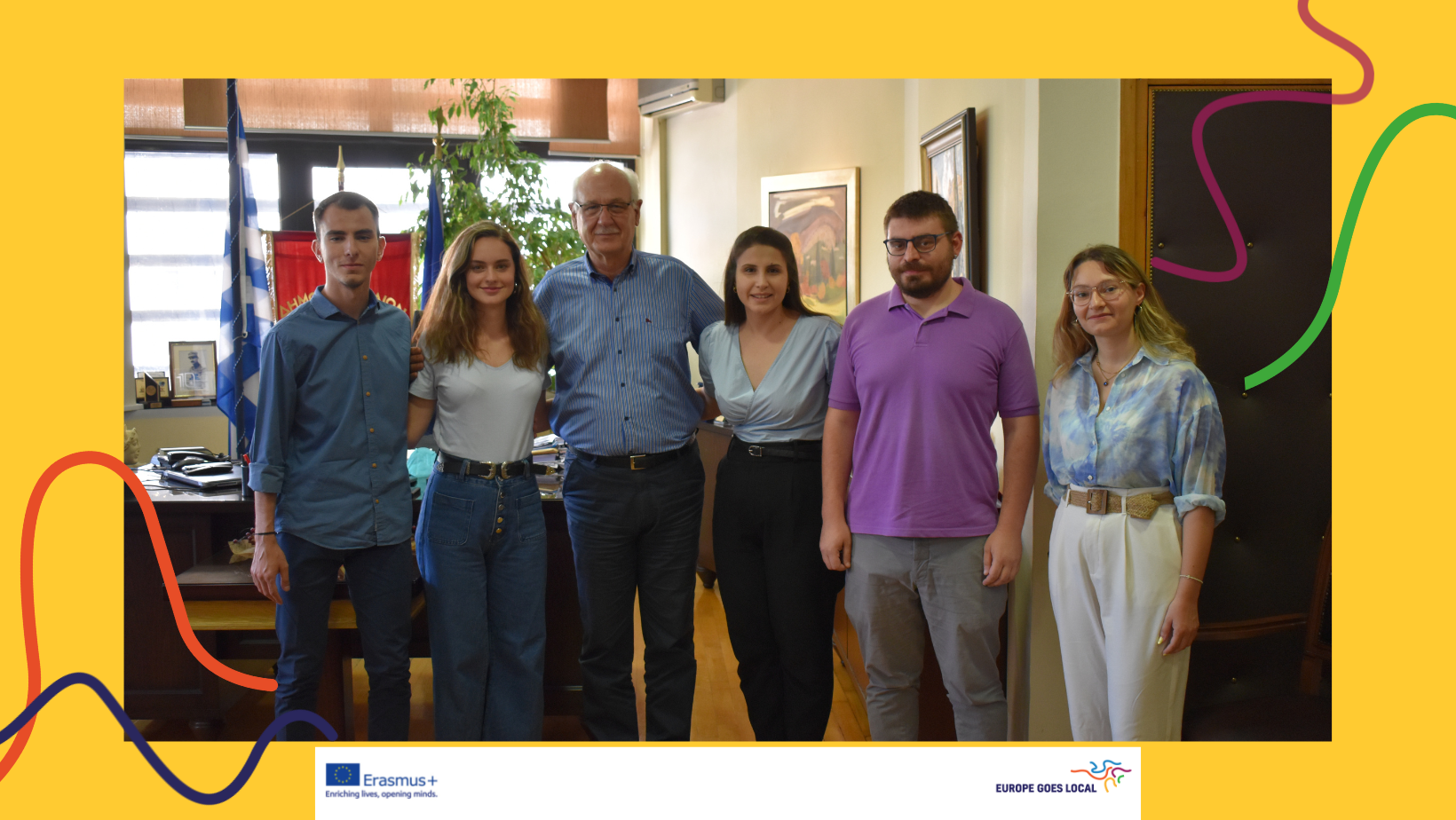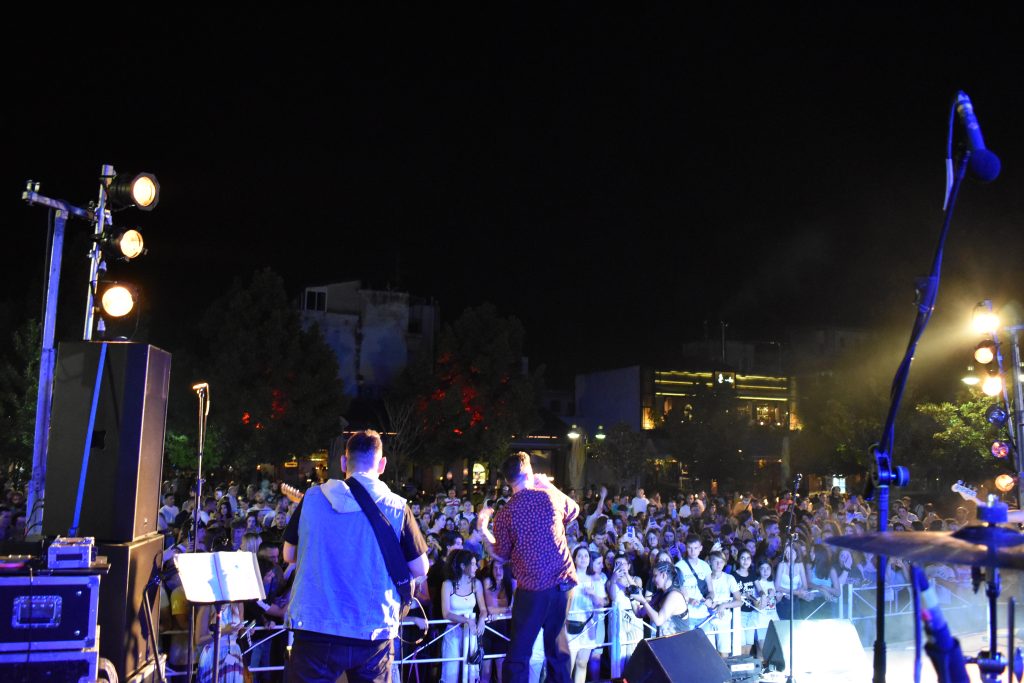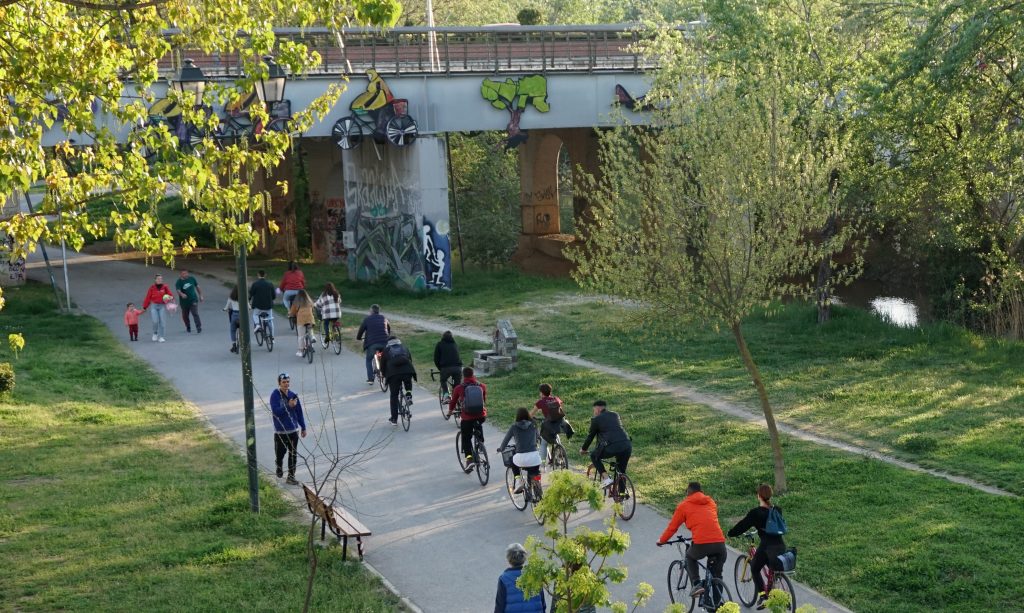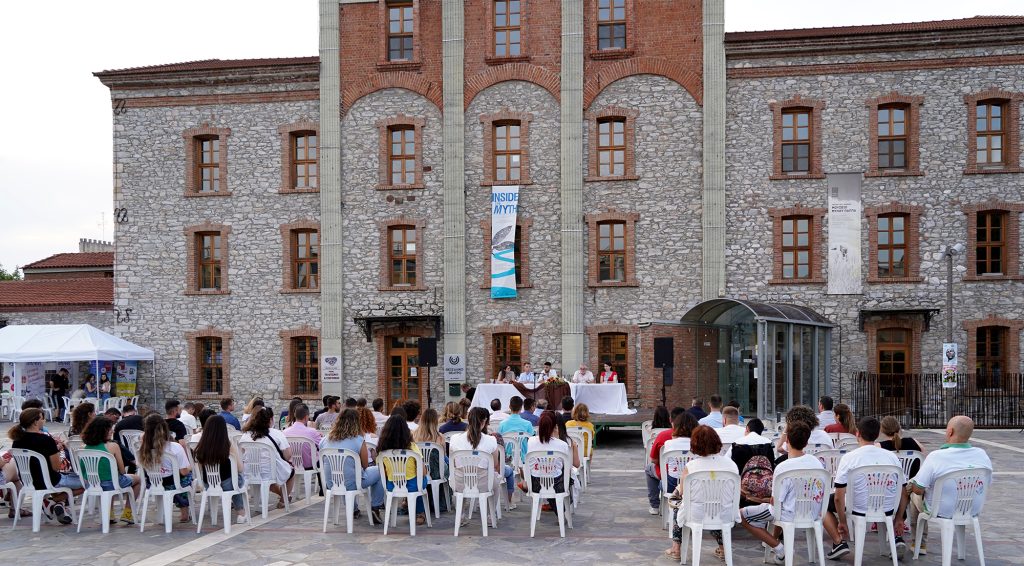
We’ve interviewed Kiriaki Tsiantou to tell us more about the Municipal Youth Council of Larissa (Greece). She’s the Secretary of the Municipal Youth Council of Larissa and an EGL Charter Ambassador.
Kiriaki: Larissa’s Youth Municipal Council was constituted in 2020 to strengthen the voice and position of young people in the local community.It’s very important to state that the Youth Municipal Council was proposed to Larissa’s City Council, and it was voted on by the councillors.
Larissa’s Youth Municipal Council consists of 42 members. One third of them have joined by lottery, while the remaining percentage of members represent an organization that is active in the local community. Also, within the Council exists committees, each of which focuses on a different area of activity. Each one has a coordinator who also regulates its functioning. Council members can join any committee they wish. The committees meet regularly and propose ideas and solutions to issues of concern to young people.

That is, the following committees operate:
The Council meets once a month and 50% +1 of the members needs to be present to meet. There the members discuss the different issues and ideas that have occurred and are analyzed during the Committee’s meetings.
There is also the Bureau, which regulates procedural matters and is responsible for the functioning of the Council. It consists of the President, the Vice-President, the Secretary, the Financial Officer, and the Press Officer. A procedural matter, for example, is the invitation and the agenda which must be sent three days before the Council meeting. The Members elect the Bureau.
Kiriaki: The Council seeks to become the voice of young people and a means for them to express the change they seek, their concerns, and their proposals. It also promotes democratic dialogue and the exchange of views and aims to integrate minority groups, such as Roma and immigrants living in our city, whose representatives take part in the Council’s plans and activities.
The meetings of the Council highlight issues that concern the young people of the city. Some of them are cultural, such as organizing a Youth Festival, political, issues concerning the environment and creating a greener city, promoting sport and a healthier life, protecting the rights of minorities living in the city, and finally, members organizing events to inform and motivate other young people.
Kiriaki: One of the most well-known, important, and large-scale activities is the Youth And Lifelong Learning Festival. This is an opportunity for local organizations to participate and showcase their activities and organize workshops to showcase their results and impact. It also includes entertainment and cultural activities like concerts with well-known artists and performances, non-formal learning activities, information sessions, workshops, and games. We aim all these activities in the first place at young people and children, but anyone interested can participate. We aim for the festival to become an annual event.

Another practice is to conduct a cycling tour of the city center. The city received this very well, as we’re promoting the use of bicycles and their health and environmental benefits, while also making the Council better known in the local community.

Particularly important is the cooperation with other Municipal Youth Councils in the country, as we often make exchanges between members . Furthermore, we cooperate with governmental bodies, like the Ministry of Education and the Association for Local Government, which support the work of the Council with their expertise.
We also participate in European programs organized by our municipality, which makes us even more known, gives us the opportunity for new experiences, and provides more knowledge.
Last but not least, the Bureau and its members participate in events and actions of the Municipality of Larissa where they emphasize the participation of young people in every field of action. For example, we participate in workshops, cultural events, and meetings of the City Council, and every event of the Municipality, thus strengthening the voice of the Council in the city.

Kiriaki: The participation of young citizens is a gamble for us. To ensure this, we try to produce quality work and address issues that we know are relevant and empowering for young people. It’s difficult and maybe time-consuming to insist on quality projects and actions, but we know that the local community will trust us this way.
Kiriaki: We strive to make our actions relevant to the wider community. It’s also important that proposals are first discussed and analyzed at the committee level, where participants consider how they can be implemented and whether there will be a response. It’s then discussed at the general meeting where members evaluate it in terms of interest, implementation, costs, and time as well as content. We seek to offer multi-layered proposals and solutions that respond to as many citizens as possible.
Kiriaki: We’ve had an introduction to the Charter and what it states and defines. We’ve discussed at a general meeting level how it could be of use to us and improve our work, and we use it as a valuable guide in the areas where necessary.
Kiriaki: One issue currently is the reform of the Council’s rules of procedure and the extension of its action. Furthermore, we are in the process of activating the student committee, which will include representatives of our city’s high schools.